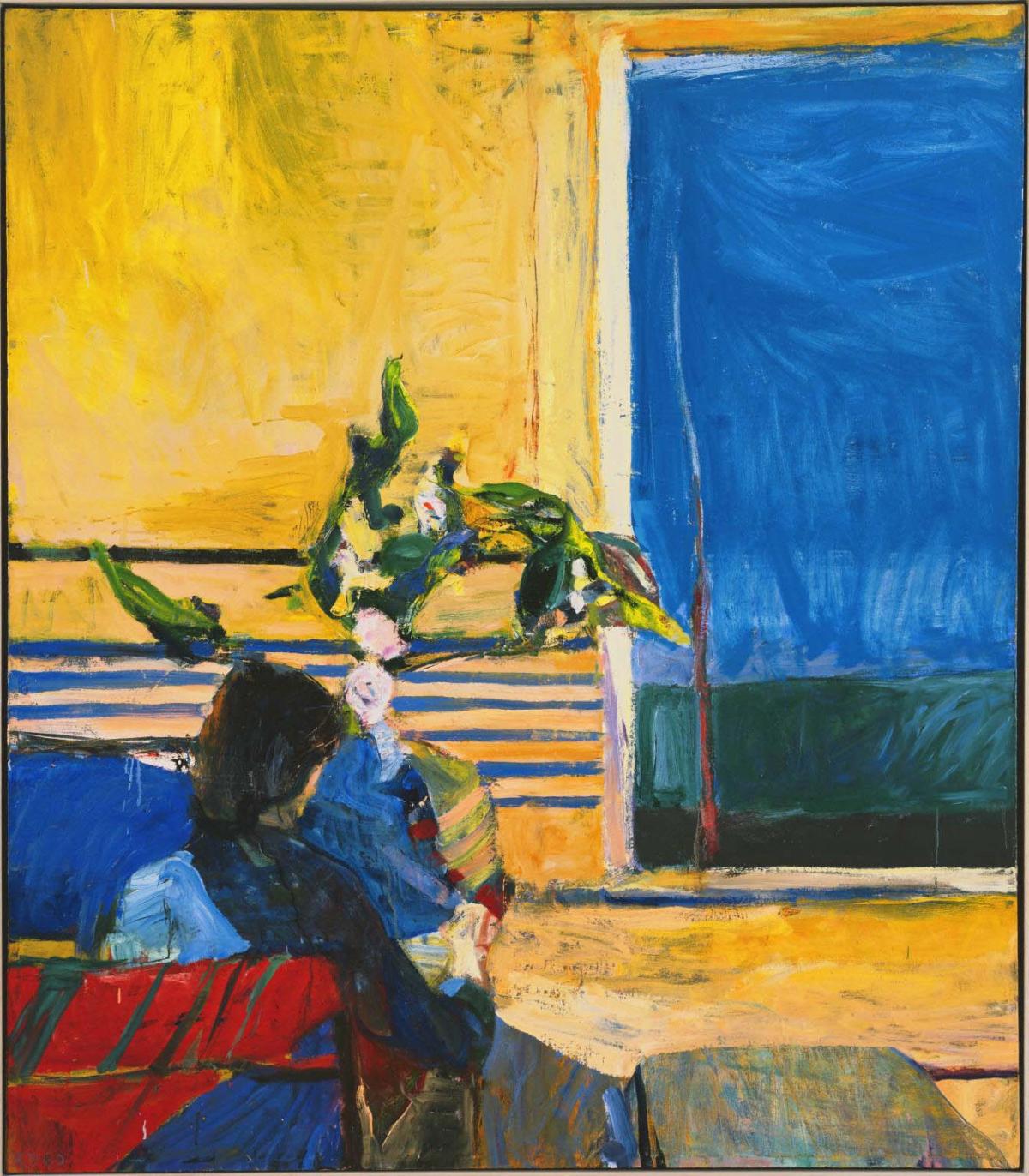Girl with Plant
Richard Diebenkorn ( 1960 )

Whether painting in a style that appears abstract or representational, Richard Diebenkorn sought new ground between the two, alternately emphasizing one or the other during his long and prolific career. More than a decade younger than most of the abstract expressionists of the New York school, Diebenkorn, living on the West Coast, was inspired by the work of Willem de Kooning, Mark Rothko, Jackson Pollock, and Clyfford Still, but also by the art of Edward Hopper, a painter of quintessentially American places.
Moreover, he was deeply moved by his own visual experience. The landscape and light of the western part of the United States permeate his work, which even in its most abstract iteration evokes a sense of place. Perhaps more than any other artist of the second half of the twentieth century, Diebenkorn is inextricably woven into the history and fabric of The Phillips Collection. The Phillips Collection was the first East Coast museum to show and acquire his work. Diebenkorn’s work was introduced to Duncan Phillips by his nephew, Gifford Phillips, during the 1950s, and it instantly struck a chord. The artist had come to know and love this museum while posted as a Marine at Quantico, Virginia, in 1944. By his own admission, he was profoundly influenced by what he saw, particularly by Pierre Bonnard’s The Open Window (1921) and Henri Matisse’s monumental painting Studio, Quai Saint-Michel (1916).
Today, the museum’s holdings are richly representative of Diebenkorn’s achievement, spanning most of the artist’s location-named periods from the critical early years in Albuquerque, New Mexico, to his last major series of works done in Ocean Park, in Santa Monica, California. Included in its holdings are five paintings and six works on paper; the museum has also presented four important exhibitions of the artist’s work. Girl with Plant comes from the artist’s figurative period when he was living in the Bay Area from 1955 to 1966. The second work by Diebenkorn to enter the collection, it was purchased by Phillips in 1961, soon after it was painted. Not in any way a portrait of a girl in a room, instead her figure seen from behind becomes a part of the painted composition, not unlike that of Madame Vuillard in The Newspaper, (c.1898) which Diebenkorn could have seen at The Phillips Collection. Diebenkorn’s girl is absorbed in an activity unknown to us while offering dimension to an otherwise flat pictorial space. In this large-scale work that echoes Matisse’s architectural structuring of his 1916 composition, the artist trades in the muted gray of a Paris sky for one of intense blue outside the window, chromatically matched by the golden yellow of the interior of the room. The two combine to evoke the sensation of California light. Highly structured in composition and reductive in its approach to its subject, this painting also exhibits the layered execution that allows the painting process to show through, an approach that became a hallmark of the artist’s style. Collapsing space into a flat, painted surface that evokes a specific place and particular light characterizes the much more abstract Ocean Park series that the artist began in 1966, after moving to this neighborhood bordering on Venice, California. Here his spacious studio prompted a rich outpouring of painting, works on paper, and prints that constitute a great late period of Diebenkorn’s work.